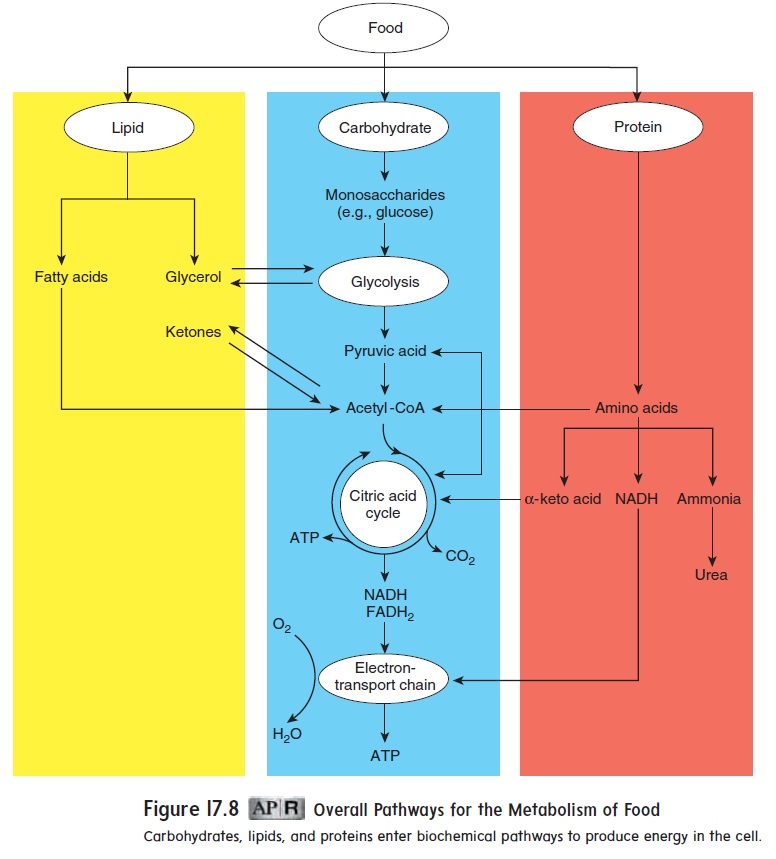Chapter: Essentials of Anatomy and Physiology: Nutrition, Metabolism, and body Temperature Regulation
Lipid Metabolism
Lipid Metabolism
Triglycerides, or fat, are the body’s main energy-storage molecules. In a normal person, fat is responsible for about 99% of the body’s energy storage, and glycogen accounts for the remaining 1%.
Between meals, triglycerides in adipose tissue are broken down into fatty acids and glycerol. Some of the fatty acids pro-duced are released into the blood. Other tissues, especially skeletal muscle and the liver, use the fatty acids as a source of energy.
The metabolism of fatty acids takes place in the mitochondria. It occurs by a series of reactions wherein two carbon atoms are removed from the end of a fatty acid chain to form acetyl-CoA (figure 17.8). As the process continues, carbon atoms are removed two at a time until the entire fatty acid chain is converted into ace-tyl-CoA. Acetyl-CoA can enter the citric acid cycle and be usedto generate ATP. In the liver, two acetyl-CoA molecules can also combine to form ketones (kē′ tōnz). The ketones are released into the blood and travel to other tissues, especially skeletal muscle. In these tissues, the ketones are converted back to acetyl-CoA, which can enter the citric acid cycle to produce ATP.

The presence of small amounts of ketones in the blood is normal and beneficial, but excessive production of ketones is called ketosis(ke-to′ sis). If the increased number of ketones exceeds the capacity of the body’s buffering systems, acidosis, a decrease in blood pH, can occur (see “Regulation of Acid-Base Balance,”). Conditions that increase lipid metabolism can increase the rate of ketone formation. Examples are starva-tion (see the Clinical Impact “Starvation and Obesity” later), diets consisting of proteins and fats with few carbohy-drates, and untreated diabetes mellitus . Because ketones are excreted by the kidneys and lungs, characteristics of untreated diabetes mellitus include ketones in the urine and “acetone breath.”
Related Topics